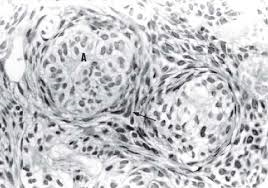
The odontogenic cysts and tumours are the rare but devastating disorders of the oral cavity. The etiology of most of them is undetermined with a probable genetic component in most of the cases. Although, most of these conditions can be managed by enucleation or extraction of involved tooth, but the invasive treatment affects the oral tissues substantially.
What if we can already predict the disease process even before it is manifested?!
Several research groups working independently have identified a multifunctional and low molecular weight cytokine called, “midkine”, which is a heparin binding growth factor. Its role has been identified in formation of several oral tissues through the mesenchymal-epithelial interactions. Midkine is encoded by MDK gene, which is seen upregulated (increase in a cellular response to a molecular stimulus due to increase in the number of receptors on the cell surface) in different tumours like Wilms tumour, breast and ovarian cancer, gastrointestinal cancer and so on. Thus, it has been elucidated that histochemical analysis of Midkine should be assessed in cancers. The odontogenic lesions being one of the devastating ones, the role of midkine is being studied in its causation. Few research groups working on odontogenic tumours have identified high levels of midkine in the affected tissue, mostly the invasive ones, through a series of interesting experiments. This protein can elucidate the progress and survival of tumour. Moreover, midkine can also be used as a targeted therapy for odontogenic lesions. Definitely, the role of further studies are required for approval of this protein in diagnosis as well as targeted therapy.
